UMF student Isaiah Wilson-McFarlane ’20 trains his lens on the beauty and science of the world close to campus
For his February reflections on the geologic forces that shape the natural splendor of our region, photographer and science writer Isaiah Wilson-McFarlane ’20 ignores conventional wisdom by purposefully chasing waterfalls. And, after perusing his account of the cascades not too far from campus, you can be forgiven if you don’t stick to the rivers and the lakes that you’re used to.
— Marc Glass, director of advancement
Coos Canyon, Byron.
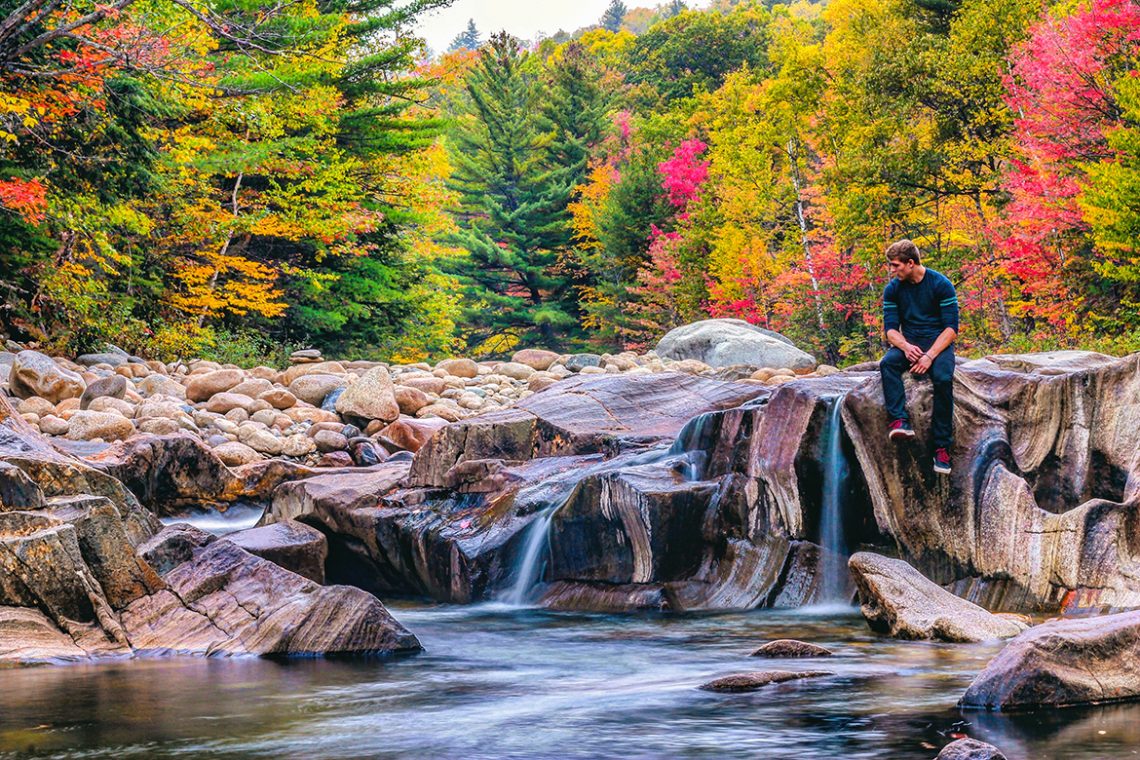
Not more than a few miles closer to Rumford from the access road to Angel Falls, you can drive past Coos Canyon, a geologically fascinating combination of cascades, falls, and rapids, which is a beautiful place to swim and cliff-jump. I spent a lot of time there last summer tracing the quartzite intrusions around the exposed bedrock. I often see people panning for gold in the river there, too. I went on a weekend drive in November on a loop through Rangeley and back past Coos Canyon after several inches of rain fell in less than a day, and the entire river was completely swollen and roaring. It made me think of what it must have been like seeing the Laurentide Ice Sheet melt and flow through river basins 12,000 years ago, with enough sediment flowing through them to dig massive potholes — like sandpaper on wood in the bedrock. These features can still be seen today in places like the Sandy River in Phillips, north of Farmington.
Angel Falls, Township D, northwest of Houghton.
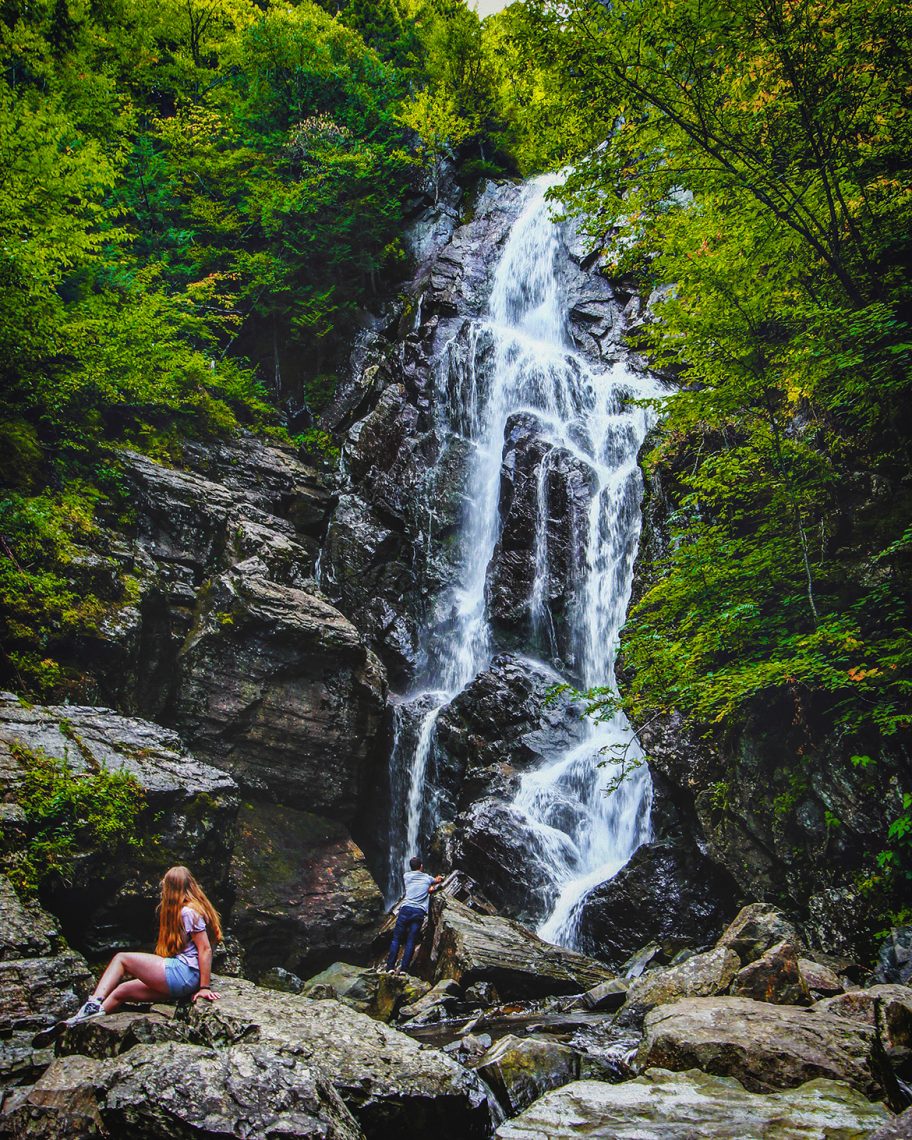
The first time I wandered down the 4-mile dirt road past a sign spray-painted on a rock and hiked up and through mountain brook to find Angel Falls, I didn’t know exactly what I was getting myself into. The last car-size boulders that I summited revealed a towering waterfall that seemed incongruous in its relatively tame and unassuming surroundings. The single drop is 90 feet tall, with cliffs that are 115 feet. You can climb up and look down if you are feeling adventurous. If you have a free day in Western Maine during the summer, especially in early fall, a beautiful way to feel like an adventurer is to find Angel Falls. In fall 2018, my friend and classmate Hailey and I did a research project studying the effects of waterfalls on aquatic insect community assemblages. After collecting data at Angel Falls, we found that the water pH was slightly above 4, which is extremely acidic. For a reference, Coca-Cola has a pH of 2.5. I have hiked to the falls during the summer, autumn, and even late winter. Each season has its own beauty. During the winter, the entire 100 foot wall was covered in ice, and I could hear the water underneath the ice rumbling like a diesel engine. Mountain Brook drains down into Mooselookmeguntic Lake, which can be seen a few miles down the road at Height of Land.
Smalls Falls, Township E.
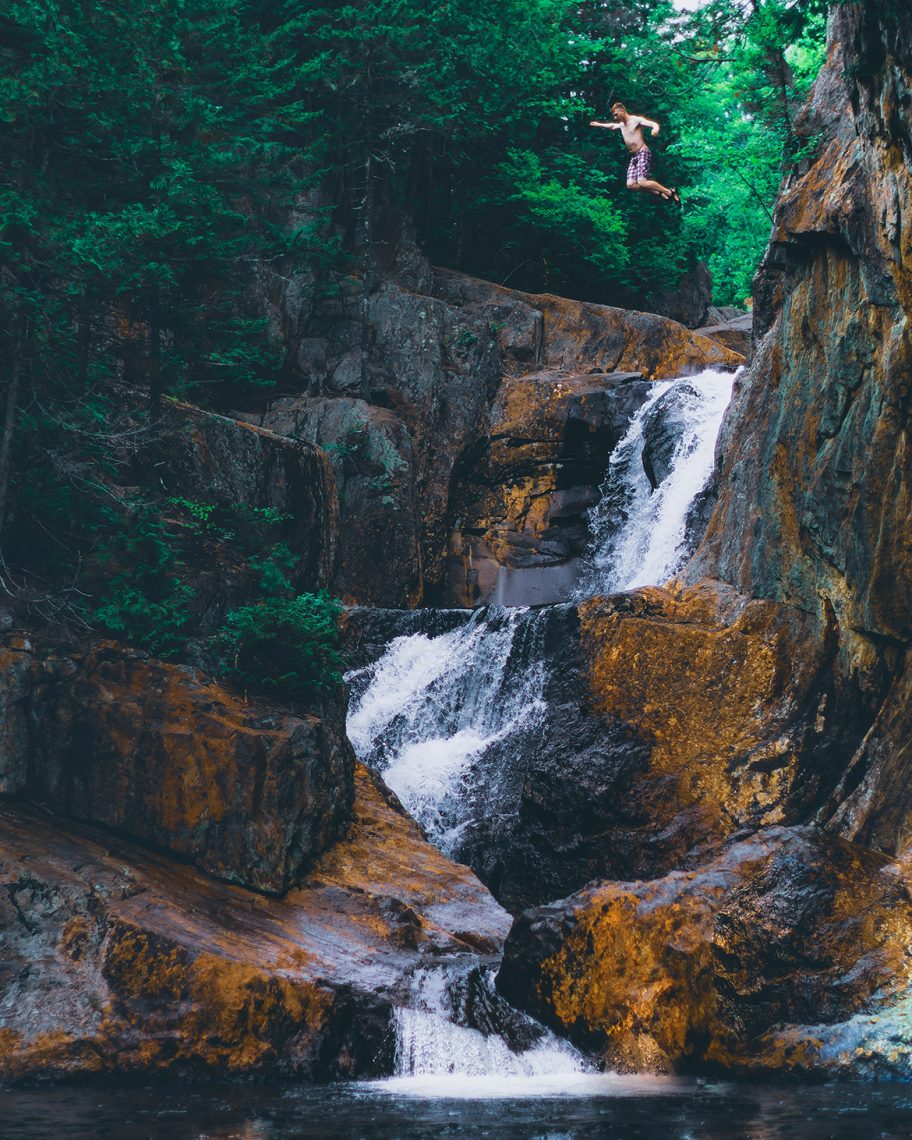
Smalls Falls is one of my favorite places in Maine to explore. I started cliff jumping there last summer, which quickly turned into my favorite thing to do on a hot day in Farmington. (That’s me in the photo above, dropping in from a 55-foot-high perch.) I have always loved waterfalls. The sound they make and the energy they display is humbling. Smalls Falls slowly eats away at the metamorphosed black schist with iridescent pyrrhotite that was placed there in the late Silurian period nearly 500 million years ago, before trees even existed. Smalls Falls is an amazing place to photograph. The changing seasons make the area dynamic, and I love showing the place to new friends because I can share in their excitement and am reminded of what it was like for me to see it for the first time. I suspect I will be coming here for the rest of my life.
Houston Brook Falls, Bingham.
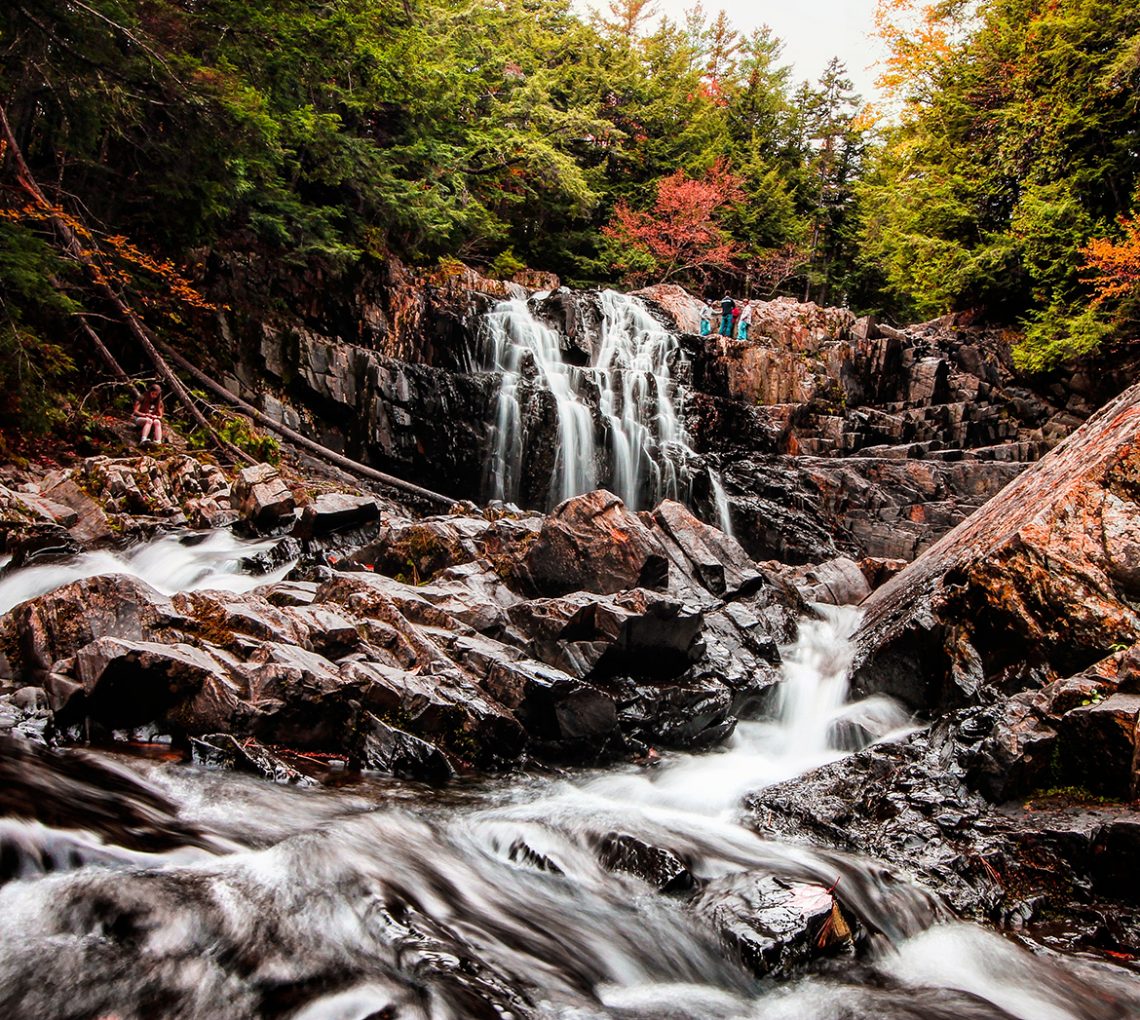
Houston Brook Falls is a pleasantly short and easy walk down the hill from the side of the road. From my first visit two years ago, I was struck by the jagged bedrock in the area. The black schist laid down in thick layers was probably formed by compressed and folded seafloor hundreds of millions of years ago. It may seem obvious at first, but one of the things I have enjoyed learning about in my geology classes is the way that gravity has a massive influence on the way everything looks around us. For a long time, in my naive anthropocentric mind, I hardly had a grasp on how important and extensive certain scientific theories like gravity are. I read a book by Martin J. Rees called Just Six Numbers, in which he explained how if gravity’s force were even minutely different, the universe, and us in it, wouldn’t exist. In geology, the law of horizontality somewhat obviously states that sedimentary layers were formed horizontally under the influence of gravity. It is hard to picture how the the layers of sedimentary rock that are forced upward and bent and curved in Houston Brook Falls might appear differently if the force of gravity was even slightly different. Would it have even compressed into the rock we can look at today?
Mosher Hill Falls, Farmington.
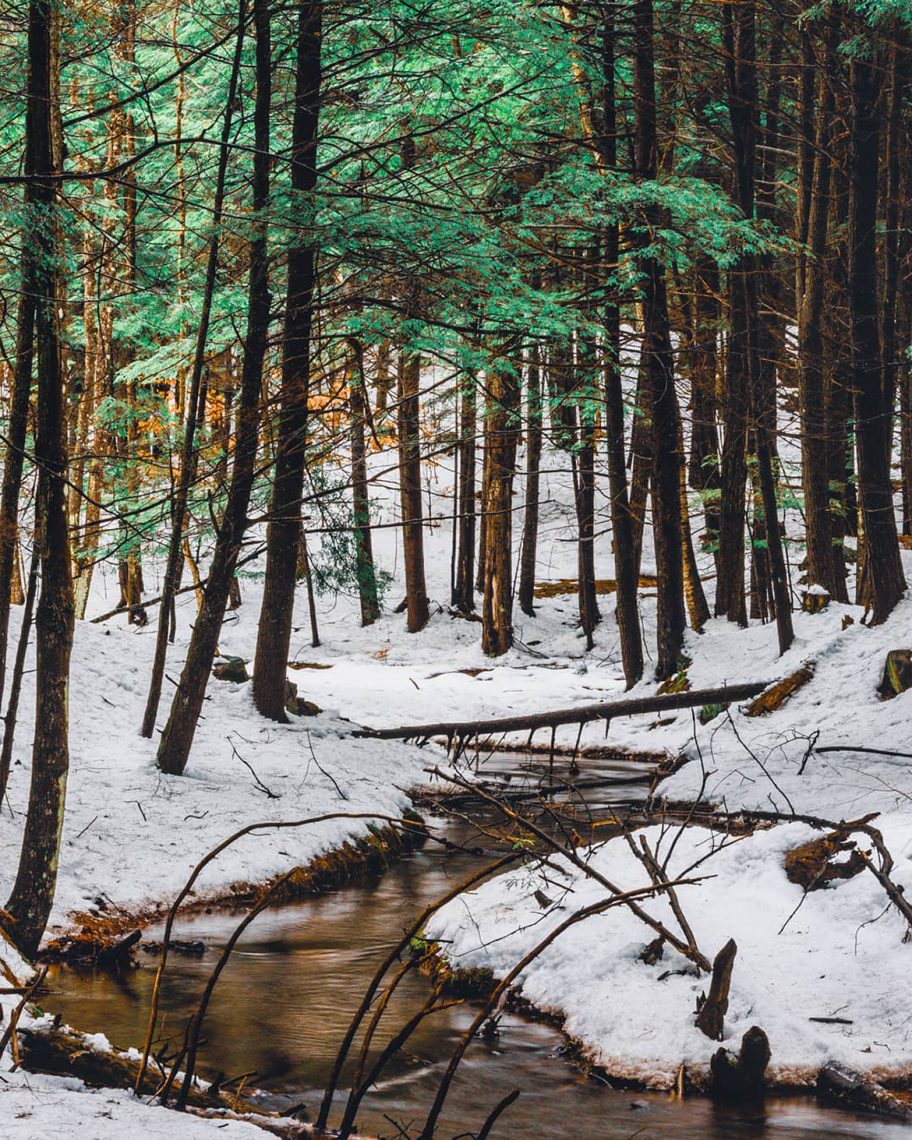
Due to its close proximity to campus, Mosher Hill Falls is a nice quiet place to get away from one’s responsibilities and decompress. While sampling aquatic insects for a research paper with my friend Hailey it struck me how bizarre it is that one of the key elements that makes Earth so much of a “home” for us is so completely alien. Arguably, one of the biggest reasons life exists on Earth is because liquid water exists here. However, liquid water, besides a very small amount created in volcanic eruptions, is not originally from Earth itself. The oxygen and hydrogen atoms that make water were created by stars and ejected during supernovae explosions. The atoms of hydrogen and oxygen combine in deep space, which combine into large chunks of ice and dust called comets. The closest comet belt to Earth is called the Kuiper Belt, located just past Neptune. As Earth formed 4.6 billion years ago out of space dust orbiting the sun, the comets from the Kuiper Belt hit our developing planet for millions of years, slowly depositing water. The comets in that belt have the same ratio of deuterium and normal water that our oceans have, helping researchers confirm the origin of our planet’s water.
Moxie Falls, The Forks.
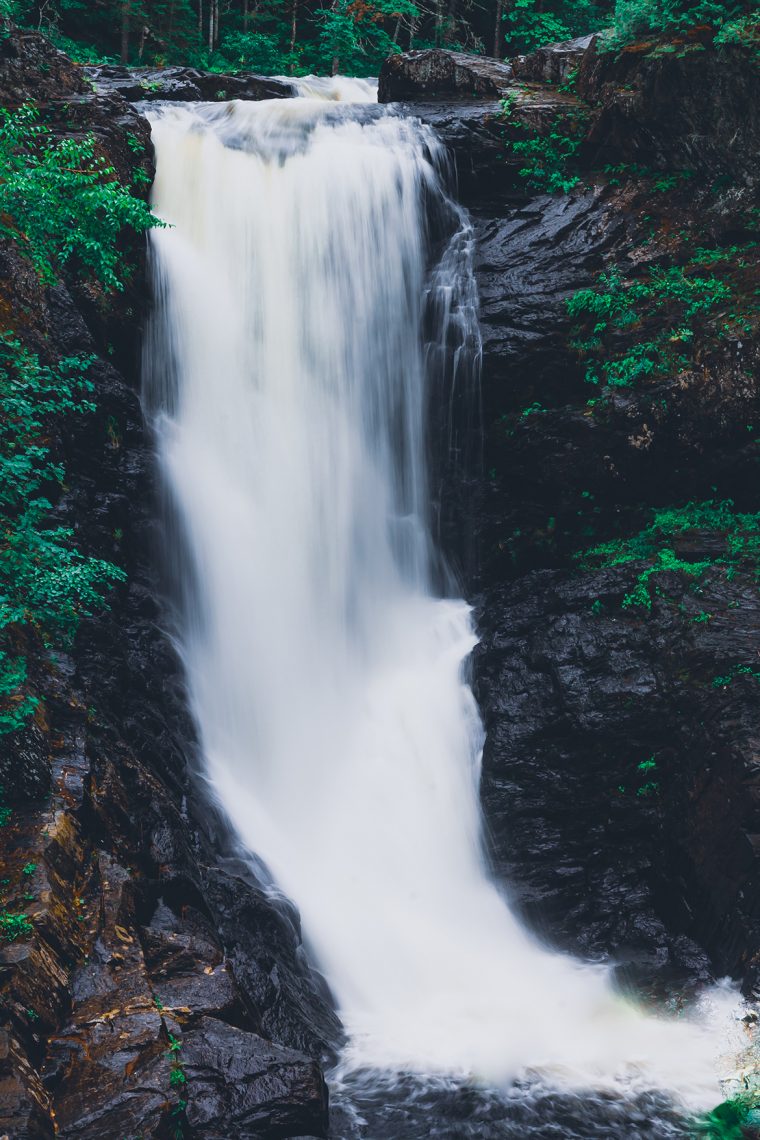
Moxie Falls reminds me of the time I spent as a kid in the Pacific-Northwest. The trail to the falls is filled with shadowy spruce and fir trees that don’t mind getting their feet wet in the soggy, poorly drained soil. As I approached the waterfall, I could hear the drumming water, and characteristic pacific-northwest green epiphytic moss covering the trees near the edge of the falls. There is a wooden walkway meant to guide me to a good view of the falls, but that is where everyone else gets their unoriginal picture for themselves. I chose to wedge myself between a firmly rooted cedar tree and the spray-soaked bedrock halfway down one of the 90-plus-foot cliffs. Between each picture I took, I had to wipe the lens clear of the incessant mist wafting over me. Moxie Falls is a wonderful place to cool off on a warm day. Water has an impressive heat capacity, meaning that it takes a lot of energy to raise the temperature of the water itself, and mist has a lot of surface area compared to its volume. What this means is that on a hot day, when you are covered with mist from the falls, you will very quickly cool off.


